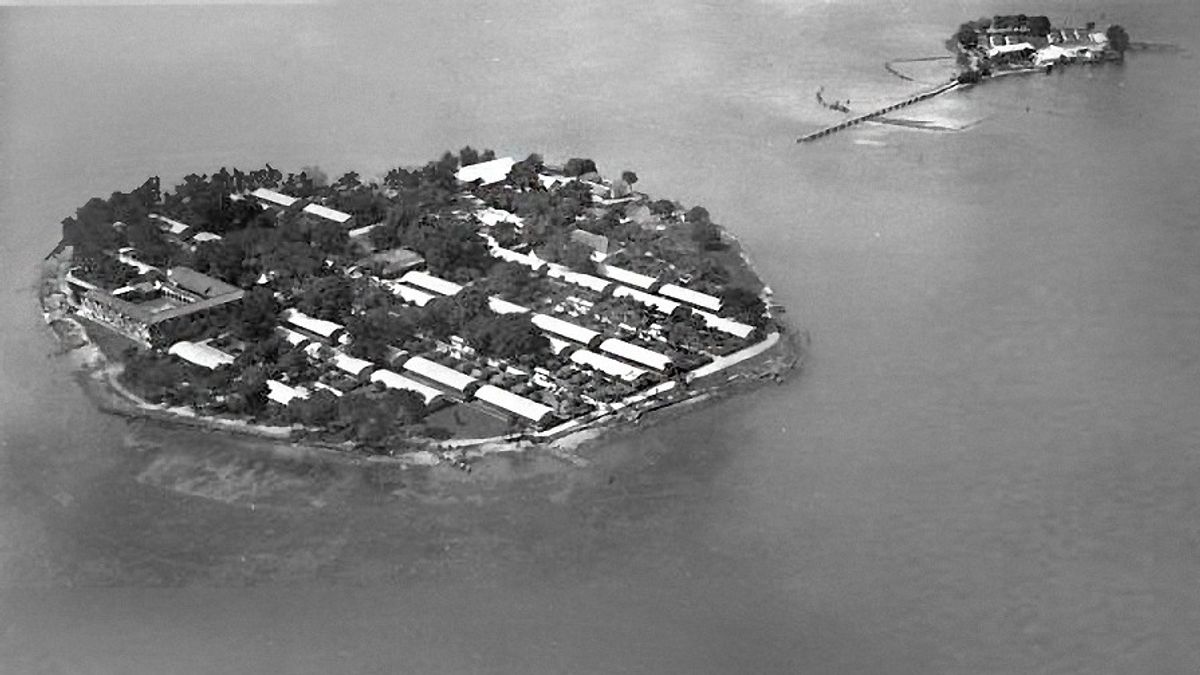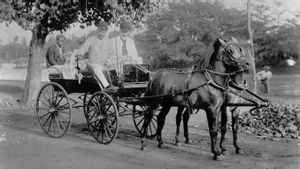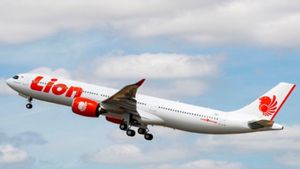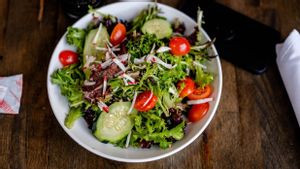JAKARTA - The choice of the Thousand Islands in Jakarta Bay as one of the leading tourist destinations with the title "10 New Bali" deserves appreciation. Moreover, out of a total of 106 islands, there are about four islands that have existed since the colonial era and are part of the long history of the capital city of the Republic of Indonesia, Jakarta.
The four islands are Pulau Cipir, Kelor, Bidadari, and Onrust. Of the four islands, it is Onrust who can continue to endure the romanticism of the nation's history. One of the pulsations of activity on Onrust Island began to be known as a limited resting place for the Banten Royal family in the 16th century.
Bambang Budi Utomo has also revealed about Onrust as a place of recreation in his book entitled Warisan Bahari Indonesia (2017). He said that when the Sultanate of Banten was still victorious, several islands in the Thousand Islands, including Onrust Island, were used as the resting place for the Sultan of Banten's family. Shortly thereafter, there was a dispute over ownership with Jayakarta.
"Jayakarta feels that the islands are territorial because of their proximity. On the other hand, Banten feels more entitled because the Thousand Islands are included in its territory, "said Bambang.
Long story short, the change in role from the resting place of the royal family to a shipyard began to appear in the mid-16th century. The trigger was none other than the failure of a Dutch explorer Cornelis de Houtman to monopolize spices in Banten.
As a result, after the Dutch VOC trading partnership was formed in 1602, high-ranking officials in the Netherlands began to think about other options by changing plans, from monopolizing Banten's spices to moving to Jayakarta. For this reason, tactics were carried out in terms of facilitating the persuasion of the Jayakarta masters to allow the VOC to be in Onrust Island.

VOC strategy to control Jayakarta
The signing of an agreement between the VOC and Pangeran Jakarta in 1610 was proof that the VOC could win the hearts of local rulers. According to Alwi Shahab, in the book Batavia Kota Hantu (2010), in the contents of the agreement, the Jayakarta party allowed the Dutch to take wood for the construction of their ships in Jakarta Bay.
Therefore, the VOC made Onrust a port as well as a large shipyard. Not only that, the colonial government also built warehouses to store cargo while ships were being repaired.
Presumably, that is the reason hundreds of ships from outside trading in Jayakarta can stop at Onrust at the same time. There are those who have the purpose of loading and unloading goods and others who only have the intention of repairing the ship, as was done by the famous British explorer Captain James Cook in 1770.
Then, it was the shipyard that gave Onrust a new nickname, namely Ship Island. "The existence of this shipyard means a lot to the Netherlands, considering that the voyage from the Netherlands to Jakarta takes months, which causes ship damage," wrote Alwi.
"At that time, about 1,200 people lived on this narrow island. Most of them were ship carpenters and soldiers. There are also many slaves who do forced labor in miserable conditions, ”he added.
The presence of the shipyard turned out to be running smoothly as an extension of the VOC plan to monopolize spices in Jayakarta. In fact, the Company secretly made Onrust a military base that was at the forefront before entering Jayakarta.
While strengthening the defense by placing a series of cannons to fight the enemy - England and Jayakarta at that time, the VOC began to think about the best time to conquer Jayakarta. Until it was time for the Governor General of the VOC who had served twice (1619-1623 and 1627-1629) Jan Pieterszoon Coen led the attack on Jayakarta on May 30, 1619.
In this attack, Onrust Island played an important role in bringing victory to the VOC. Thanks to this victory, the VOC slowly turned Jayakarta into Batavia. A name that comes from the Batavier tribe, its ancestors were the Dutch.
Interestingly, the fate of Onrust Island is even more famous thanks to the shipyard which travelers who come to Batavia praise praises. On this basis, in order to support the defense of the Netherlands, the stone laying of the fort construction began gradually in 1656.
Several years later, the construction of the fort in the shape of a pentagon was completed. Interestingly, the entire fort was made of brick and coral. Not to forget, the colonial government equipped the fortress with two bastions or corners of the fort named Beekhuis and Towpunt while placing lookouts in each corner of the fort.
Practically, the stretch of life is getting busier. Onrust began to fill up with all kinds of buildings. This was revealed by Adolf Heuken in his book entitled Historic Places in Jakarta (2007).
“On the island of Onrust there is a small church (1772) whose foundations can still be demonstrated by the current island keepers. You can also see the former site of three cranes, two sawmills and a gunpowder warehouse, ”said Adolf.
"Several large warehouses store ballast materials, which are needed by sailing ships, such as wood, copper from Japan, saltpeter and tin," he concluded.
The English, Chinese, Japanese, Arabic, and French versions are automatically generated by the AI. So there may still be inaccuracies in translating, please always see Indonesian as our main language. (system supported by DigitalSiber.id)









